Lillo fortress, a short history
Lillo fortress was built in the turbulent area of the so called 'eighty years war' (1568-1648) when several provinces of Low Countries raised against their Habsburg ruler. In the end, this conflict resulted in the separation of the Northern Republic of the seven United Provinces (roughly current Netherlands) and the Southern Habsburg Netherlands (roughly contemporary Belgium and Luxemburg). Together with the fortress of Liefkenshoek, Lillo played an important role in the Northern Netherlands control of the river Scheldt. Thanks to the work of prof. dr. J.M.G. Leune, we are able to present a short history of Lillo fortress based on key moments in its existence.
Key moments in the history of Lillo
1578
To defend Antwerp against Spanish attacks, prince William of Orange orders the construction of two forts north of Antwerp on both sides of the river Scheldt: Lillo and Liefkenshoek. In the following years the forts will be reinforced multiple times with cannon and soldiers.
1584
In july Alexander Farnese starts the siege of Antwerp. Spanish troops try to conquer Lillo but fail. The fortress is supplied by the city of Antwerp over the river.
1585
17 August, Antwerp surrenders. Lillo and Liefkenshoek remain in the hands of the Revolters. From now on, they control the river Scheldt and Antwerp's access to the North Sea. This does not mean that the river is actually closed. The forts, now in the hands of the Zeelanders, are predominantly customs offices to collect tolls and transship cargo.
1609
Lillo fortress is reinforced and partly rebuilt. A fifth bastion is added to its fortification.
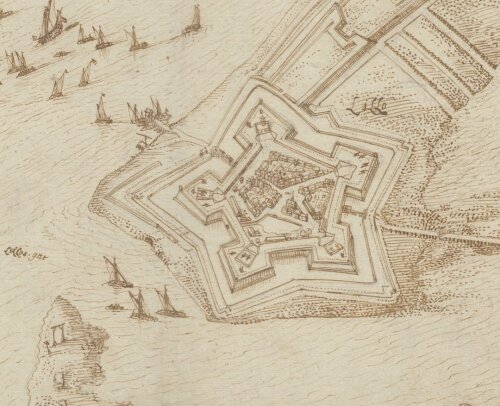
1648
Peace of München. The end of the Eighty Years War. Lillo and Liefkenshoek remain in the hands of the Zeelanders. In the following years, one by one the dykes along the Scheldt are being repaired and the land around the fortresses reclaimed.
1747
During the War of Austrian Succession, French troops invade the Southern Netherlands. They conquer and largely destroy both Lillo and Liefkenshoek. After peace has been signed in 1748, both fortresses are handed back to the Zeelanders.
1783-6
Austrian emperor Joseph II and ruler of the Southern Netherlands disputes the right of the Dutch Republic to control the Scheldt. Eventually this leads to the so called "Keteloorlog" when a canonball fired by a Dutch warship hits the soup kettle on an Autrian warship. In the peace treaty of Fontainbleau Lillo and Liefkenshoek are handed over to the Austrians. The Dutch republic remains entitled to levy tolls.
1795 - 1814
After the defeat of the Dutch republic by the French, Lillo is occupied by a French garrison. Several drastic renovations take place in these years, one of which is the construction of a large new powder house. Lillo gets much of its contemporary morphology.
1830 - 1839
After the Belgian War of Indepence, the Dutch king William I is finally forced to hand over Lillo to the new Belgian state. The Dutch hold on to the right to levy tolls.
1863
Belgium buys off the toll for 13.328.00 Franks.
1894
The military function of Lillo is abolished.
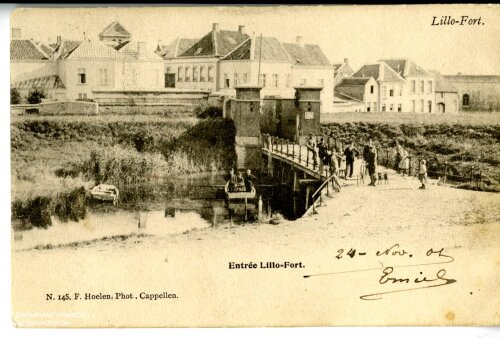
Historical reconstruction in 5 steps
The historical reconstruction process consisted of 5 steps. These steps are explained one by one below.
1. Collecting sources
We used two types of sources: historical maps and written sources.
1. Historical maps
The oldest map showing some detail of the fort is by Bonaventura Petri (1638). Although it provides considerable detail about the internal structure of the fort, it is not suitable for precise reconstruction purposes in Geographic Information Systemes (GIS) because of its birdeye perspective.
Petri (1638)
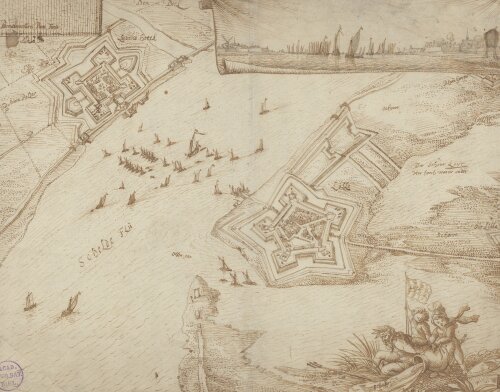
A map by David Willem Coutry Hattinga (1733) does meet these qualifications. The disappearance of the inland port and the addition of some extra fortification works are about the only major morphological changes between 1609 and 1747. The internal structure of the fort is the best reflection of the mid 17th century situation that still exists.
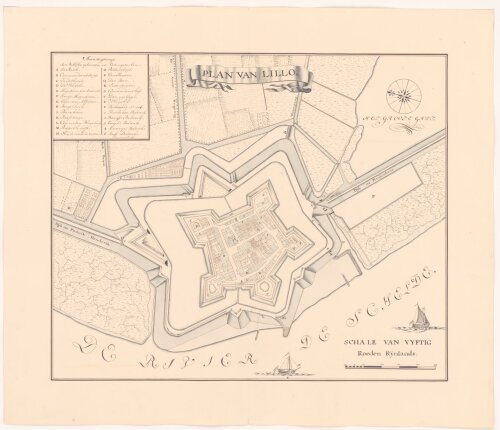
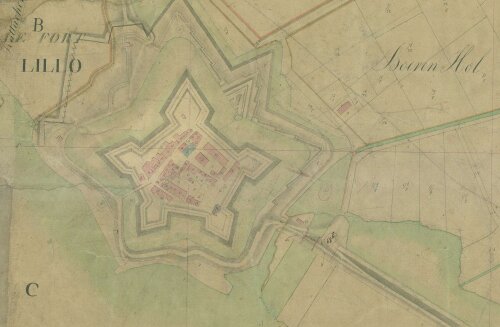
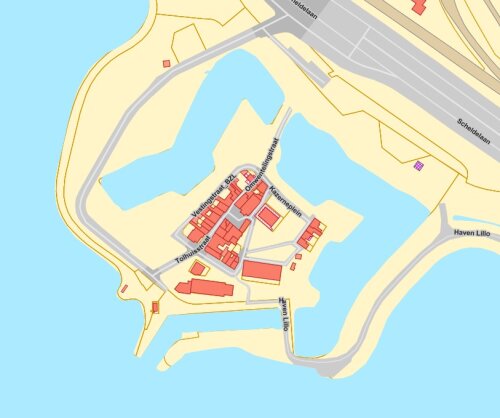
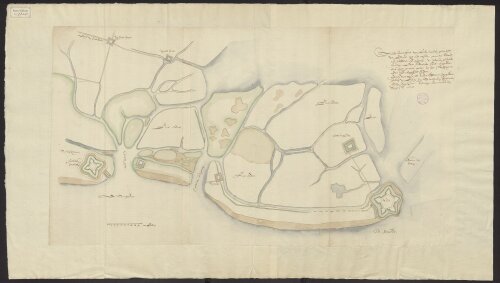
2. Written sources
This research is highly indebted to the work of Prof. dr. J.M.G. (Han) Leune. In his work we were able to find detailed information about the inhabitants and the buildings of the fort and a detailed description of the damage caused by the 1747 siege. Via references we were able to find and consult several tax lists informing us about the social stratification of the inhabitants.
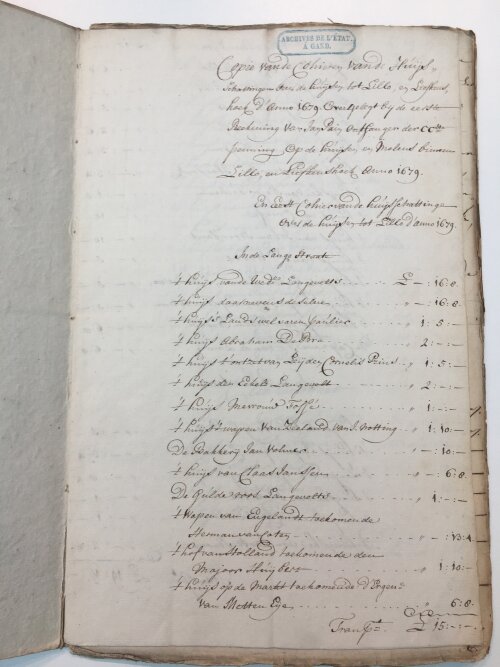
Step 4 'Data connection' describes how the historical data was connected to the geographic reconstruction in GIS.
2. Georeferencing
Before being able to analyze the information contained on a scanned historical map, the various map elements must be digitized. This is done using a Geographic Information System or GIS software package. We distinguish two steps: locating the digital map in space by assigning geographical coordinates (georeferencing) and digitizing the map elements as nodes and lines (vertices and paths, vectorization).
The historical reconstruction of the Lillo fortress is based on the georeferenced Hattinga map and the Vlaming map. This was done in three stages:
1. GRB 2022 - Primitief kadaster 1818
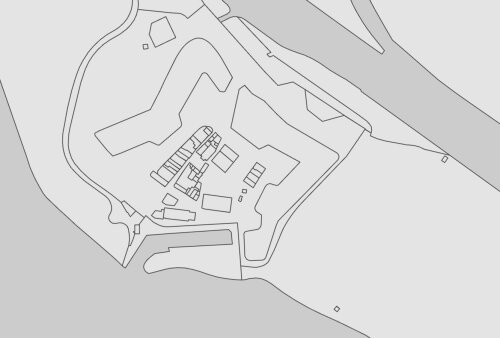
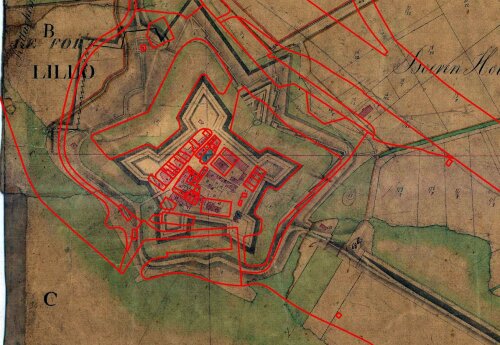
2. Primitief kadaster (1818) - Hattinga (1733)
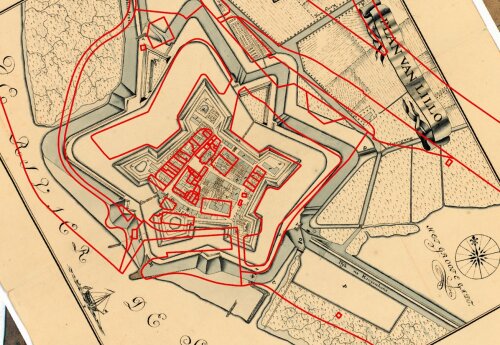
At first glance, the Hattinga map seems to be very accurate. But, after careful georeference, small deviation can have major consequences.
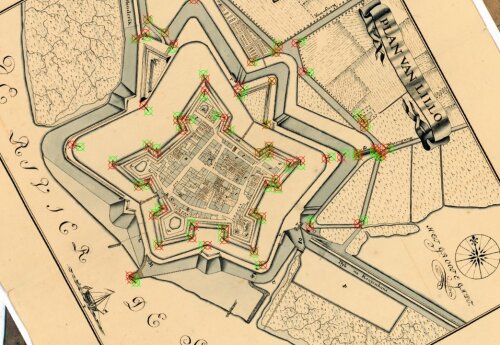
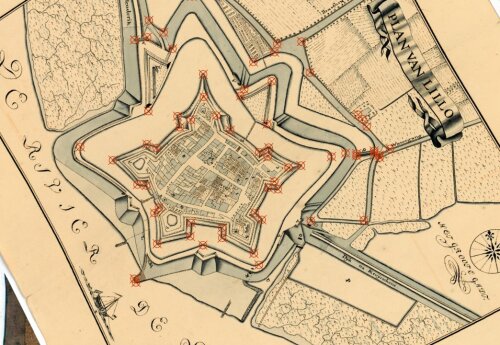
3. Embedding the Lillo fortress in its rural surroundings.
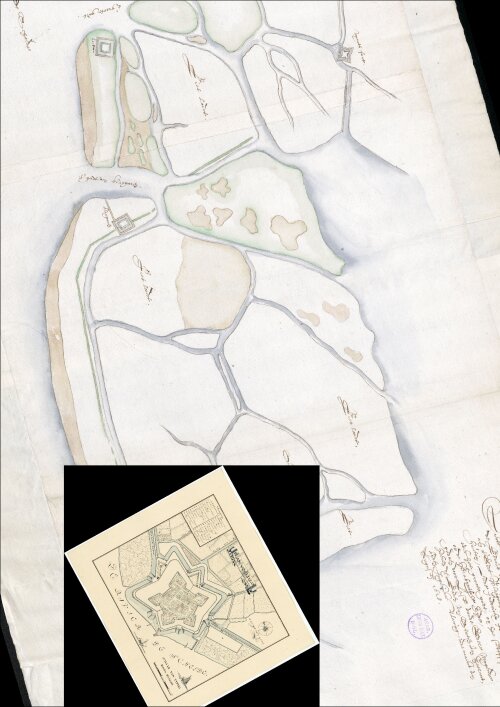
3. Vectorization
During the vectorization stage, map elements become represented by points, nodes or polygons. In GIS applications, each applied point, node or polygon adopts the geographic coordinate of the underlying georeferenced map, enabling calculations on all generated digital map layers such as the spacing, dimensions and areas of the spatial elements. Based on the information on the map, land use and building blocks have been identified.
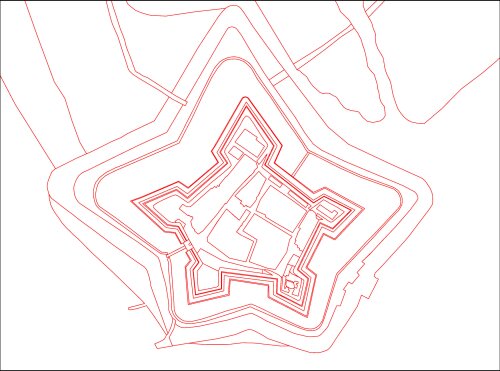
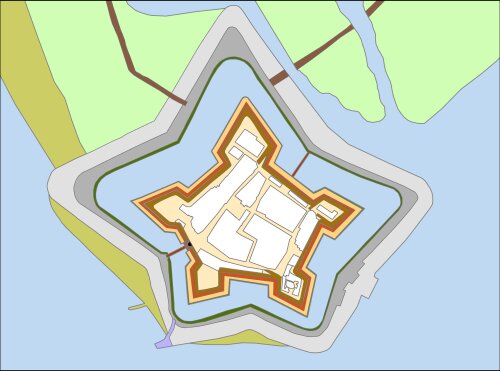
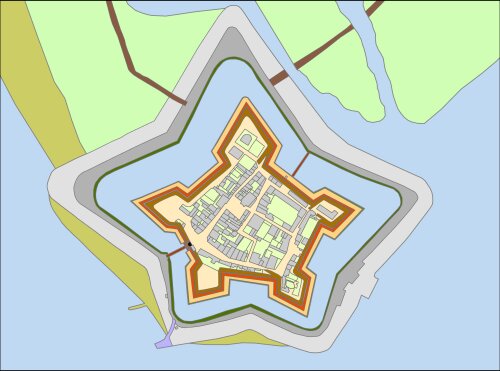
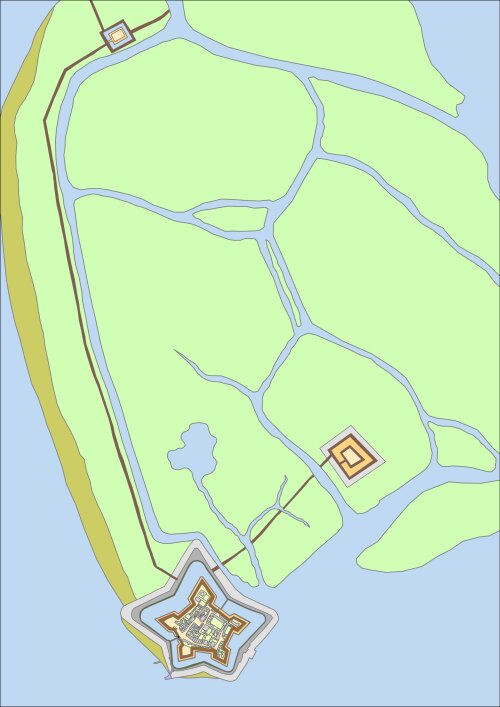
4. Data connection
Once the vectorization was completed, additional data, derived from Leune's work and written sources about the fortifications, the buildings and inhabitants has been connected. It discloses information about Lillo fortress as a military but also as an economic and social system.All these characteristics can be explored in the public webviewer (see "Publication"). Further spatial and statistical analysis is now possible in a Geographical Information System.
1. Economic functions
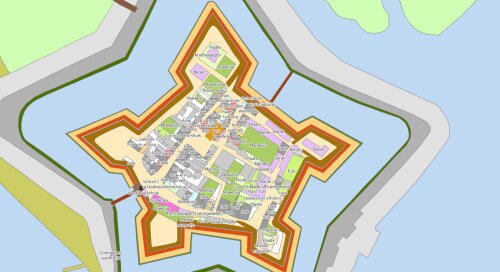
2. Social stratification (The darker blue, the more prosperous the inhabitant)
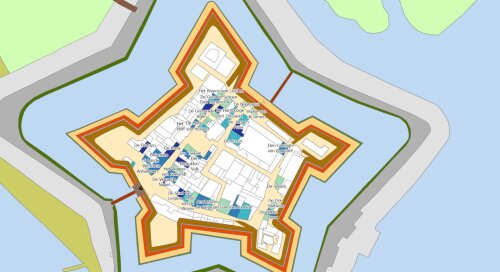
3. War damage 1747 (The darker red, the heavier the damage)
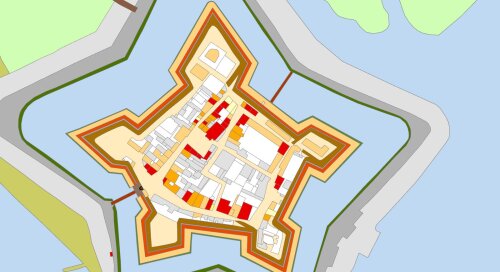
5. Publication
Tutorial: Webviewer | GIStorical Antwerp | University of Antwerp (uantwerpen.be).
This tutorial explains the most important menu items (widgets) of the webviewer. Every widget has a full description on the Esri website. Click the headers of the paragraphs to find these full descriptions.